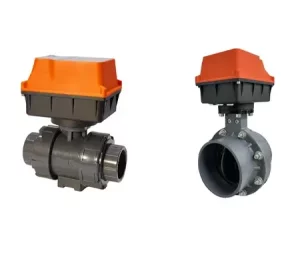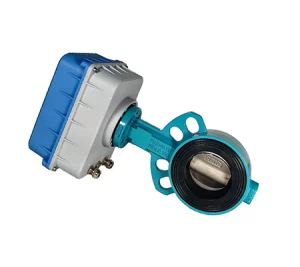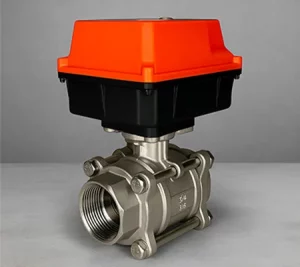Avoid your inquiry is delay response, please enter your WhatsApp/WeChat/Skype along with the message, so we can contact you at the very first time
We will reply you within 24 hours. If for urgent case, please add WhatsApp: +8613188899036, or WeChat: 0531-87968777. Or call 0531-87968777 directly.
* We respect your confidentiality and all information are protected. We will only use your information to respond to your inquiry and will never send unsolicited emails or promotional messages.
Picking the wrong valve for your pipeline leads to costly leaks, energy waste, and endless downtime. The pressure mounts—literally—until you select the right valve type for your system’s flow, control, and maintenance needs.
The main difference between a ball valve and a butterfly valve is how they control flow: ball valves use a rotating ball with a hole for tight shut-off and low pressure drop, while butterfly valves use a rotating disc that is lightweight and ideal for space-saving, cost-effective throttling in larger pipes.

Ball Valves vs. Butterfly Valves
A ball valve is a quarter-turn valve featuring a round ball with a hole (the bore) inside the valve body. When the handle is turned 90°, the hole in the ball aligns with the pipe to allow flow, or turns perpendicular to block flow completely. This simple but powerful design makes ball valves the go-to solution for shut-off and isolation in everything from water supply lines to industrial process plants.
Stat:
Ball valves are typically rated up to 1,000 psi for water, oil, and gas, with high-performance designs exceeding 10,000 psi in critical systems.
A butterfly valve uses a disc mounted on a stem that rotates inside the valve to control flow. Like a butterfly’s wings, the disc pivots 90° to either allow fluid through or block the pipe. Butterfly valves are generally lighter than ball valves, easier to install, and more cost-effective for larger pipe diameters.
Quote:
“Butterfly valves can be installed in tight pipe runs with limited space, making them a favorite for high-rise and shipboard systems.” — Facility Engineer, Shanghai

butterfly valve
| Feature | Ball Valve | Butterfly Valve |
|---|---|---|
| Shut-off Element | Floating ball with a hole | Rotating disc (like wings of a butterfly) |
| Bore | Full-port or reduced-port | Always smaller than the pipe |
| Pressure Drop | Extremely low (full-port) | Higher (disc always in flow path) |
| Throttling Control | Limited (except v-port ball) | Excellent incremental flow control |
| Weight | Heavy in large diameters | Lightweight than ball valves |
| Cost | Higher, especially above DN150 | Lower, especially above DN200 |
| Typical Applications | Isolation, shut-off | Modulating, on/off, space-saving |
| Actuation | Quarter-turn (manual/auto) | Quarter-turn rotary valves (manual/auto) |
| Maintenance | Seats/ball replaceable | Seat/disc replaceable (may need pipe opened) |
Industry Fact:
Butterfly valves are used in over 50% of all large-diameter HVAC and water projects worldwide due to their compact footprint and cost advantages.
Ball valves offer excellent shut-off but limited control for modulating flow. The standard design opens the hole in the ball fully at 90°, so flow jumps abruptly from off to on. For better flow control, a v-port ball valve introduces a precisely shaped opening, allowing smoother modulation and control the flow across a range.
Butterfly valves, however, are designed to throttle and balance flow at any position between fully open and closed. The valve disc can be adjusted to precisely control flow rate, which makes butterfly valves ideal for balancing chilled water or distributing air in HVAC systems.
Data Table:
| Valve Type | Typical Pressure Drop (ΔP) | Use Case Example |
|---|---|---|
| Full-port Ball | < 2% of line pressure | High-flow, critical shut-off |
| Reduced-port Ball | 3-5% of line pressure | Budget-focused, isolation duty |
| Butterfly | 5-12% of line pressure | Flow balancing, HVAC, modulating |
Ball valves are available in several types, each suited for specific tasks in building automation, manufacturing, or water distribution:
Quote:
“For high-purity water lines in pharmaceuticals, a cavity-filler ball valve is a must. It prevents product build-up and maintains hygiene.” — Quality Engineer, Biotech Facility

SS electric ball valve
Butterfly valves come in several configurations, each offering advantages for different operating conditions:
For more on electric actuator solutions for butterfly valves, see our internal page with in-depth technical guidance.
Selecting the right valve type depends on your pipe size, operating pressure, and the specific requirements of your system.
Fact:
A 10-inch butterfly valve weighs up to 80% less than a comparable ball valve, and installation labor is often cut in half.
Internal link:
For a complete guide on pipe sizing and selection for industrial valves, explore our resource center.
Quote:
“Switching from large diameter ball valves to butterfly valves cut our installed cost by over $15,000 in one project.” — Project Manager, Industrial Plant
Internal link:
Read our installation guide for large-diameter valve projects for more practical tips.
Background:
A food processing plant needed to automate isolation and flow control across multiple stainless steel pipes carrying water, brine, and cleaning chemicals. Their existing globe valves were leaking and required frequent manual intervention.
Solution:
Our engineers evaluated the site and recommended a mix of full-port ball valves for chemical lines (to ensure tight shut-off and avoid pressure drop) and wafer butterfly valves for the water mains (to reduce weight and simplify actuation). All valves were paired with smart electric actuators.
Results:
Internal link:
Explore more on custom smart valve solutions for process industries.
Today’s industrial valve technology goes far beyond simple on/off operation. Building automation engineers demand valve solutions that integrate seamlessly with sensors, controllers, and cloud dashboards.
Industry insight:
Smart valves can reduce water losses and unscheduled shutdowns by 25% compared to manually operated valves.
Internal link:
Learn how our intelligent valve control solutions can transform your building’s efficiency.
How do I decide between a ball valve and a butterfly valve for my project?
Consider the pipe size, flow control needs, pressure drop requirements, and budget. Ball valves provide bubble-tight shut-off and low pressure drop, while butterfly valves are better for large pipes and modulating flow.
Can a butterfly valve be used for isolation?
Yes, butterfly valves can serve as isolation valves, but may not seal as tightly as ball valves in high-pressure or hazardous applications.
What are the maintenance differences between ball valves and butterfly valves?
Ball valves allow easier seat replacement without removing the valve from the pipe. Butterfly valve seat changes often require full valve removal, but their design is less prone to leaks.
Are ball valves available for large diameters?
Large diameter ball valves are available but tend to be heavy and costly. Butterfly valves are generally preferred above DN200.
What types of actuators can be used with these valves?
Both ball valves and butterfly valves can be automated using electric, pneumatic, or hydraulic actuators. We offer solutions for every major protocol and application.
How does pressure drop compare between the two types?
Full-port ball valves offer minimal pressure drop. Butterfly valves have higher pressure drop due to the disc in the flow, but this is often acceptable in non-critical systems.
| Scenario | Choose Ball Valve | Choose Butterfly Valve |
|---|---|---|
| Need tight shut-off | ✔️ | – |
| Flow control (throttling) | v-port ball possible | ✔️ Excellent control |
| Pipe size < DN150 | ✔️ | ✔️ (if weight is a concern) |
| Pipe size > DN200 | Possible (costly/heavy) | ✔️ Preferred (lighter, cheaper) |
| Minimal pressure drop | ✔️ | – |
| Automated control | ✔️ | ✔️ |
| Limited install space | – | ✔️ |
| Low maintenance | ✔️ (easy seat change) | ✔️ (few moving parts) |
Looking for expert guidance or custom valve solutions?
Visit our homepage for smart valve manufacturing or contact our engineers directly for a free consultation and detailed quote.

| Feature | Ball Valve | Butterfly Valve |
|---|---|---|
| Shut-off Element | Floating ball with hole | Rotating disc |
| Throttling | Limited (v-port best) | Excellent control |
| Weight | Heavy in large size | Lightweight |
| Cost (large pipes) | High | Low |
| Maintenance | Easy seat change | Seat/disc change (may remove valve) |
| Best for | Shut-off, small/medium pipes | Throttling, large pipes |